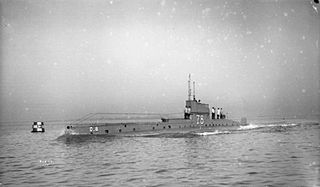HMS A2 was an A-class submarine built for the Royal Navy in the first decade of the 20th century.
HMS A12 was an A-class submarine built for the Royal Navy in the first decade of the 20th century. After surviving World War I, she was sold for scrap in 1920.

HMS A9 was an A-class submarine built for the Royal Navy in the first decade of the 20th century. After surviving World War I, she was sold for scrap in 1920.
HMS L10 was a L-class submarine built for the Royal Navy during World War I. The boat was sunk in 1918 by German torpedo boats.

HMS D1 was one of eight D-class submarine built for the Royal Navy during the first decade of the 20th century.
HMS D3 was one of eight D-class submarine built for the Royal Navy during the first decade of the 20th century.
HMS D7 was one of eight D-class submarines built for the Royal Navy during the first decade of the 20th century.

HMS D8 was one of eight D-class submarines built for the Royal Navy during the first decade of the 20th century.

HMS C12 was one of 38 C-class submarines built for the Royal Navy in the first decade of the 20th century. The boat survived the First World War and was sold for scrap in 1920.
HMS C20 was one of 38 C-class submarines built for the Royal Navy in the first decade of the 20th century. The boat survived the First World War and was sold for scrap in 1921.
HMS C23 was one of 38 C-class submarines built for the Royal Navy in the first decade of the 20th century. The boat survived the First World War and was sold for scrap in 1920.

HMS Starfish was a first-batch S-class submarine built for the Royal Navy during the 1930s. Completed in 1933, she participated in the Second World War.
HMS C25 was one of 38 C-class submarines built for the Royal Navy in the first decade of the 20th century. The boat survived the First World War and was sold for scrap in 1921.

HMS C37 was one of 38 C-class submarines built for the Royal Navy in the first decade of the 20th century. The boat survived the First World War and was sold for scrap in 1919.
HMS C36 was one of 38 C-class submarines built for the Royal Navy in the first decade of the 20th century. The boat survived the First World War and was sold for scrap in 1919.

HMS C34 was one of 38 C-class submarines built for the Royal Navy in the first decade of the 20th century. The boat was sunk by a German submarine in 1917.
HMS C33 was one of 38 C-class submarines built for the Royal Navy in the first decade of the 20th century. The boat sank with all hands on 4 August 1915 after hitting a mine.

HMS L4 was a L-class submarine built for the Royal Navy during World War I. The boat survived the war and was sold for scrap in 1934.

HMS L52 was a late-model L-class submarine built for the Royal Navy during the First World War. The boat was not completed before the end of the war and was sold for scrap in 1935.

HMS L9 was an L-class submarine built for the Royal Navy during World War I. The boat survived the war and was sold for scrap in 1927.











